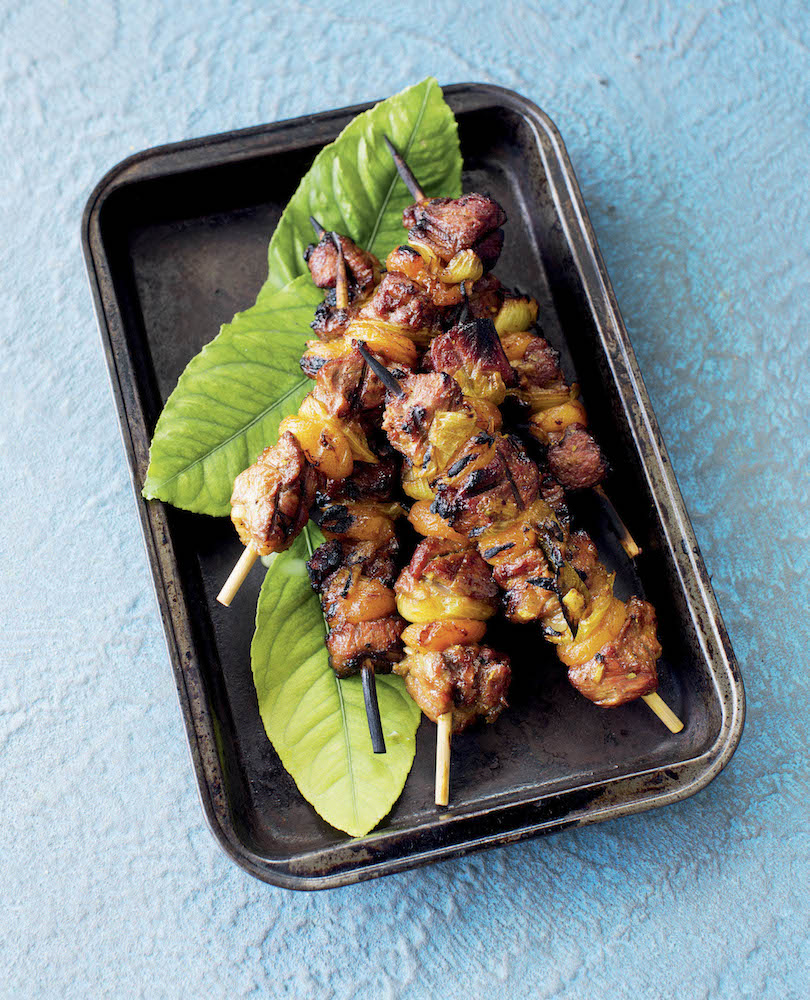Bitter+Sweet combines everyday South African ingredients that help define the national experience.
BITTER+SWEET: A HERITAGE COOKBOOK by Mietha Klaaste as told by Niël Stemmet (Human & Rousseau)
Bitter+Sweet is an irresistible combination of ingredients that, when mixed together, form a delicious slice of South African life.
The “bitter” is the story of the life of Mietha Klaaste (as told by Niël Stemmet), a woman who was born on a farm in the Robertson district in the Western Cape where her father was the foreman for “Oubaas” and her mother worked in the house for “Oumies”.
The Klaaste family lived in a cottage on the farm. The living quarters were cramped, with the three children sharing a bed, and there were no luxuries. But the house had a garden full of flowers and beyond that was the river where Klaaste used to go after school to look at the tadpoles, crabs and dragonflies.
Beyond the river were the mountains and the farm had abundant fruit trees, grape vines and a vegetable garden.
Not so “bitter” you might say but, in a scenario that should be familiar to all South Africans, Klaaste’s mother spent her time cooking and cleaning at the big farmhouse, and when she came home had to cook and clean her own house and find time for her children as well.
Klaaste did well at the farm school and was all set to graduate to the school in town when her mother broke the news that would leave her heart “in tatters”: the young girl had to leave school and work for the farmer’s recently married son. Klaaste’s dream of becoming a teacher, “someone with an education”, was shattered.
She found comfort in her love for the child of “Mies Susan” and “Kleinbaas Johan”, and in the meals that she used to cook for him.
And this is where the “sweet” comes in as Klaaste explains the simple pleasure of traditional food cooked with lots of love and a minimal range of spices.

Sosaties, a braai essential. (Supplied)
The key here is the subtitle: A Heritage Cookbook. All the old favourites appear: vetkoek, bredies (carrot, tomato and pumpkin), peach jam, bobotie, old-fashioned pancakes, pumpkin fritters and malva pudding.
Almost everyone will find recipes here that conjure up the tastes and smells of childhood. Cabbage meatballs: “My granny used to make that all the time.” Dried peas with custard: “That is so delicious. My mother still makes it.”
For me, it was the recipe for sosaties. Mutton cubes that have been bathed overnight in milk laced with lemon leaves, then dunked in a tangy sweet marinade that includes curry powder, vinegar and apricot jam, are threaded on to skewers interspersed with onions and dried apricots.
A braai just isn’t the same without them and now I have the recipe to aid my attempts to recreate the flavours of my youth.
Many of the recipes have mutton as the main ingredient. Meat from “old sheep” was more accessible on the farm, but nowadays lamb is what is on offer in most supermarkets and butcheries, and mutton is much harder to come by.
When times are hard, you can try the recipe for “mommy’s bully beef pie” and, if you are looking for an alternative source of income by having a stall at the local fête, try the “church’s curry and rice” recipe, which starts with 12kg of mince. And if you are still feeling guilty about sneaking into the kitchen cupboard when you were a child to steal a can of condensed milk, there is a recipe so you can make your own.
This is a book to be treasured by all South Africans, the pages gradually becoming stained with the ingredients as we follow the recipes for meals that bring back the aromas of our youth, or dampened by tears as we read the story of Klaaste’s life as a hard-working “second mother” and acknowledge that this is a situation that continues today with many women spending more time with the children of their employers than they do with their own.